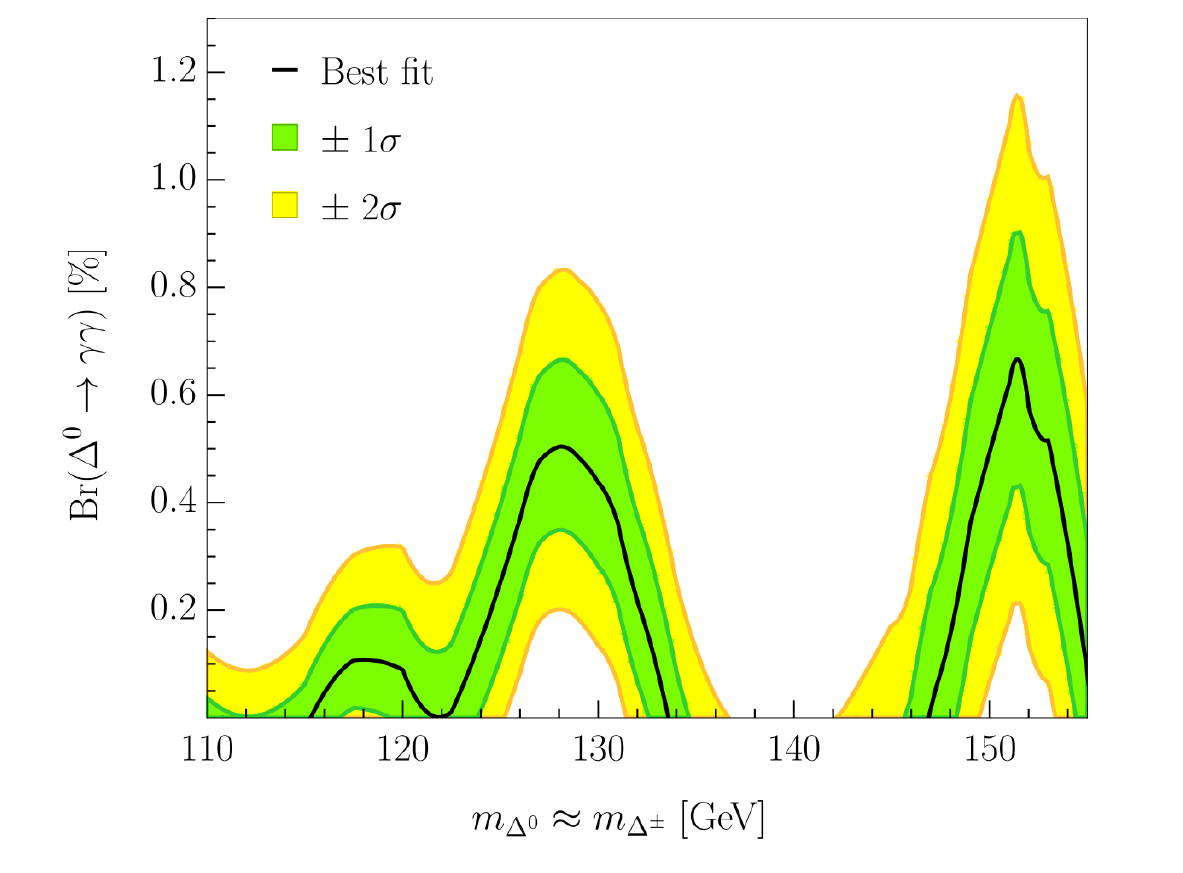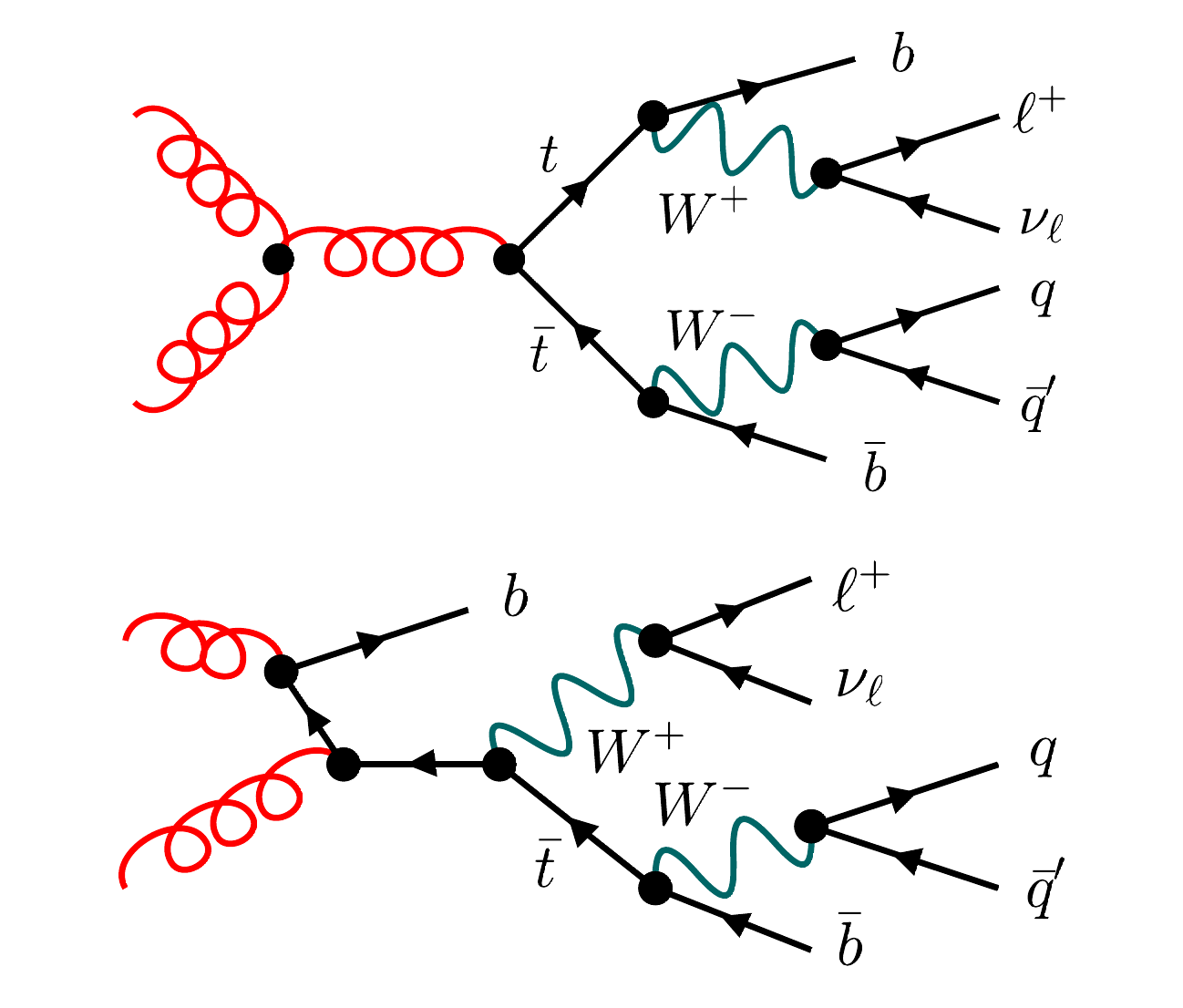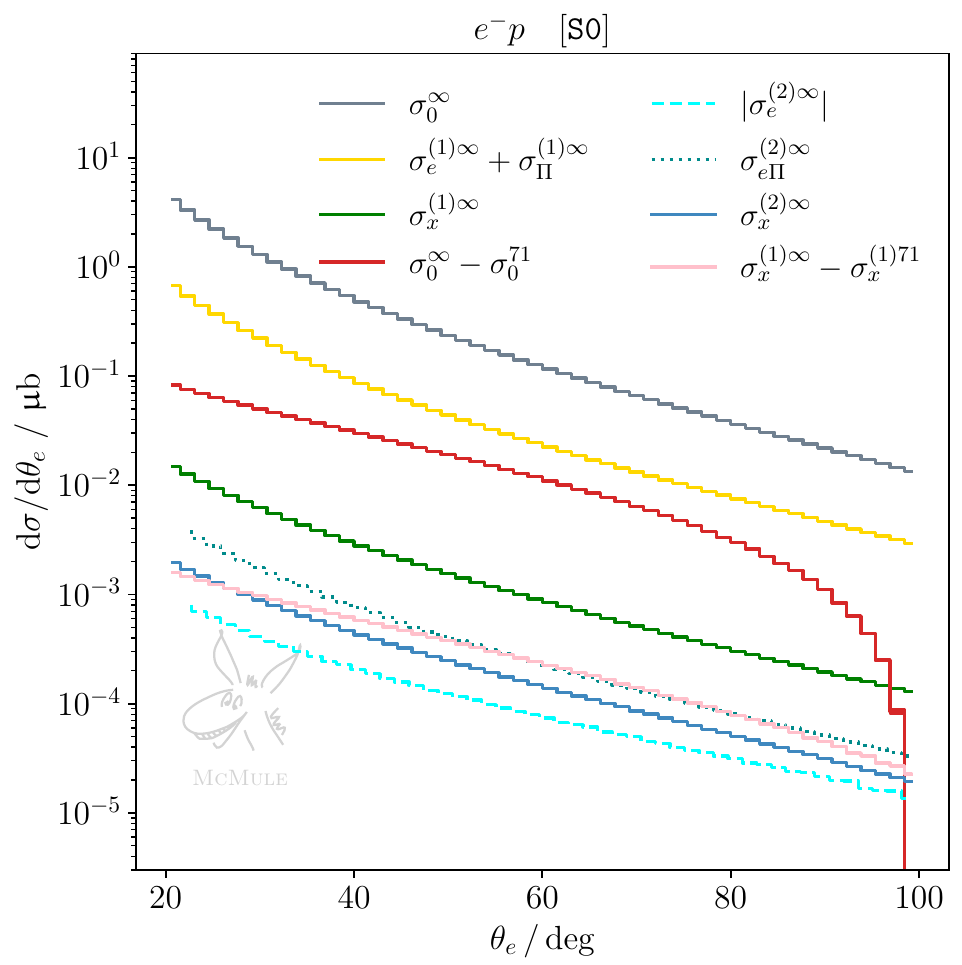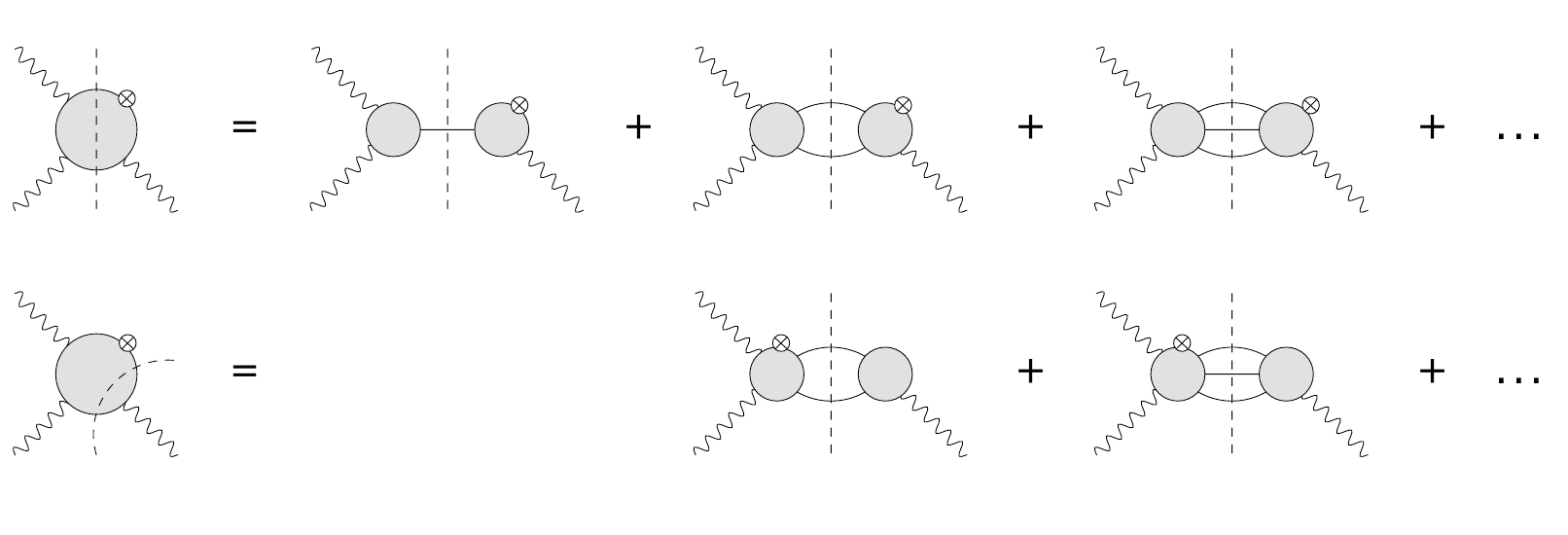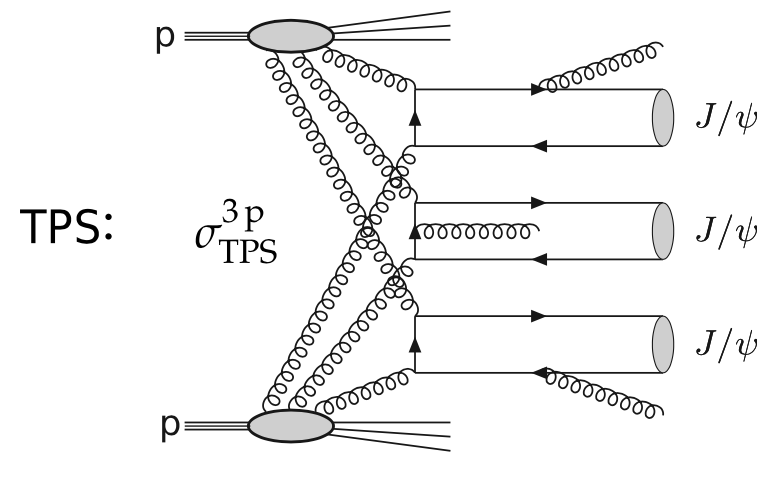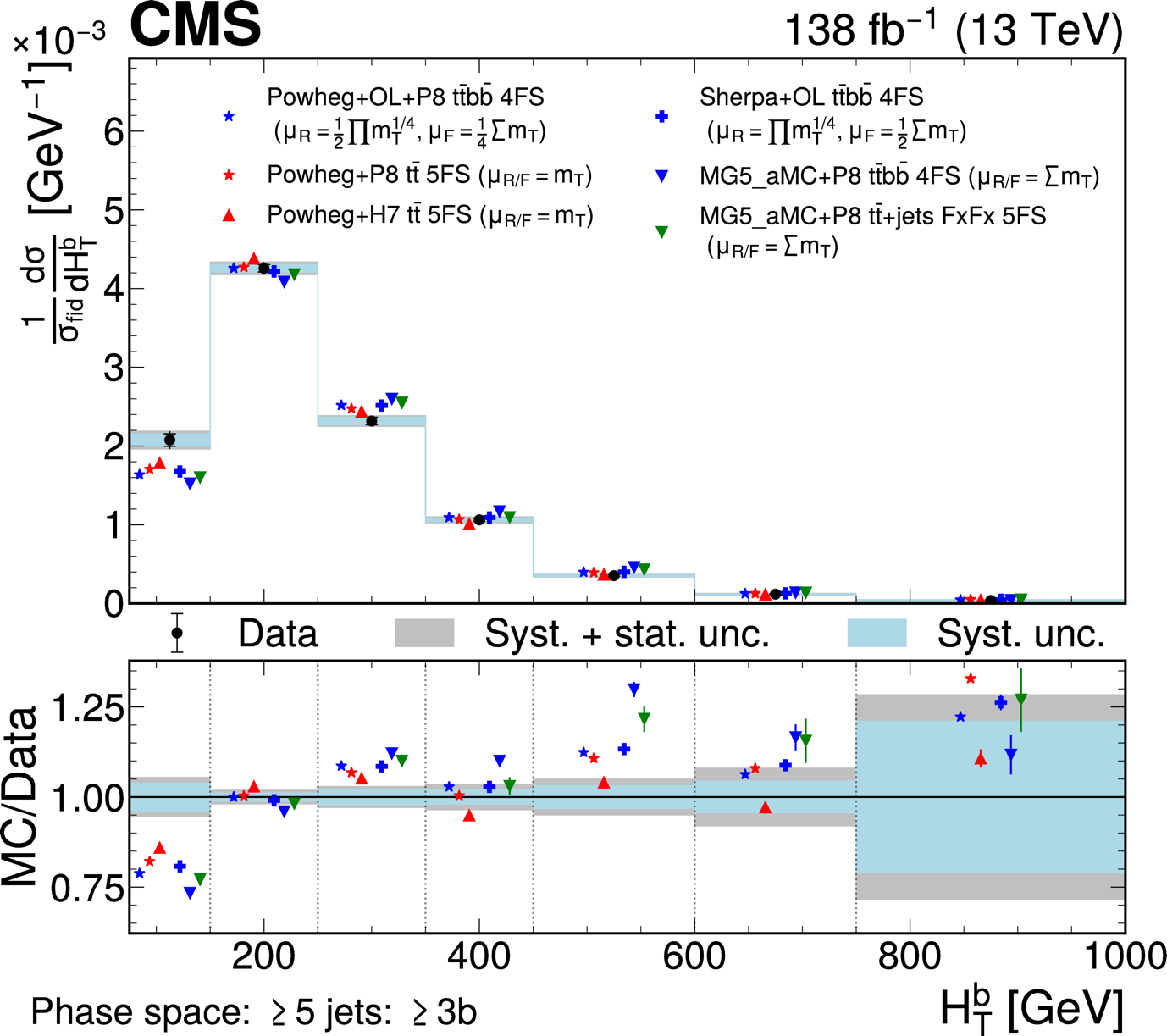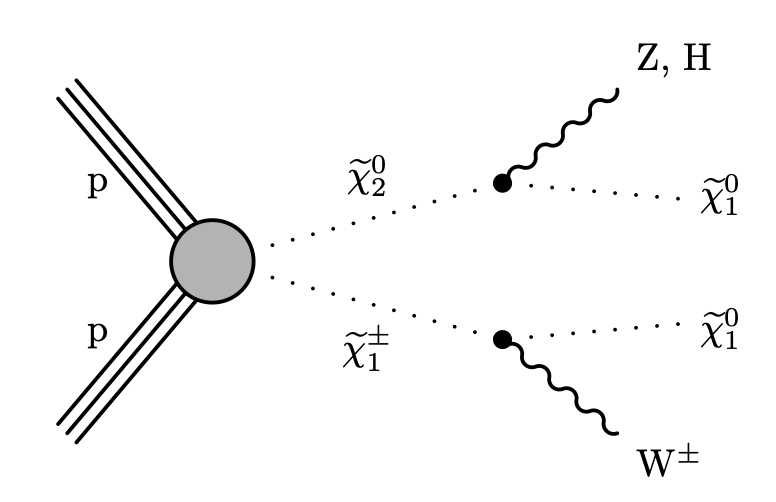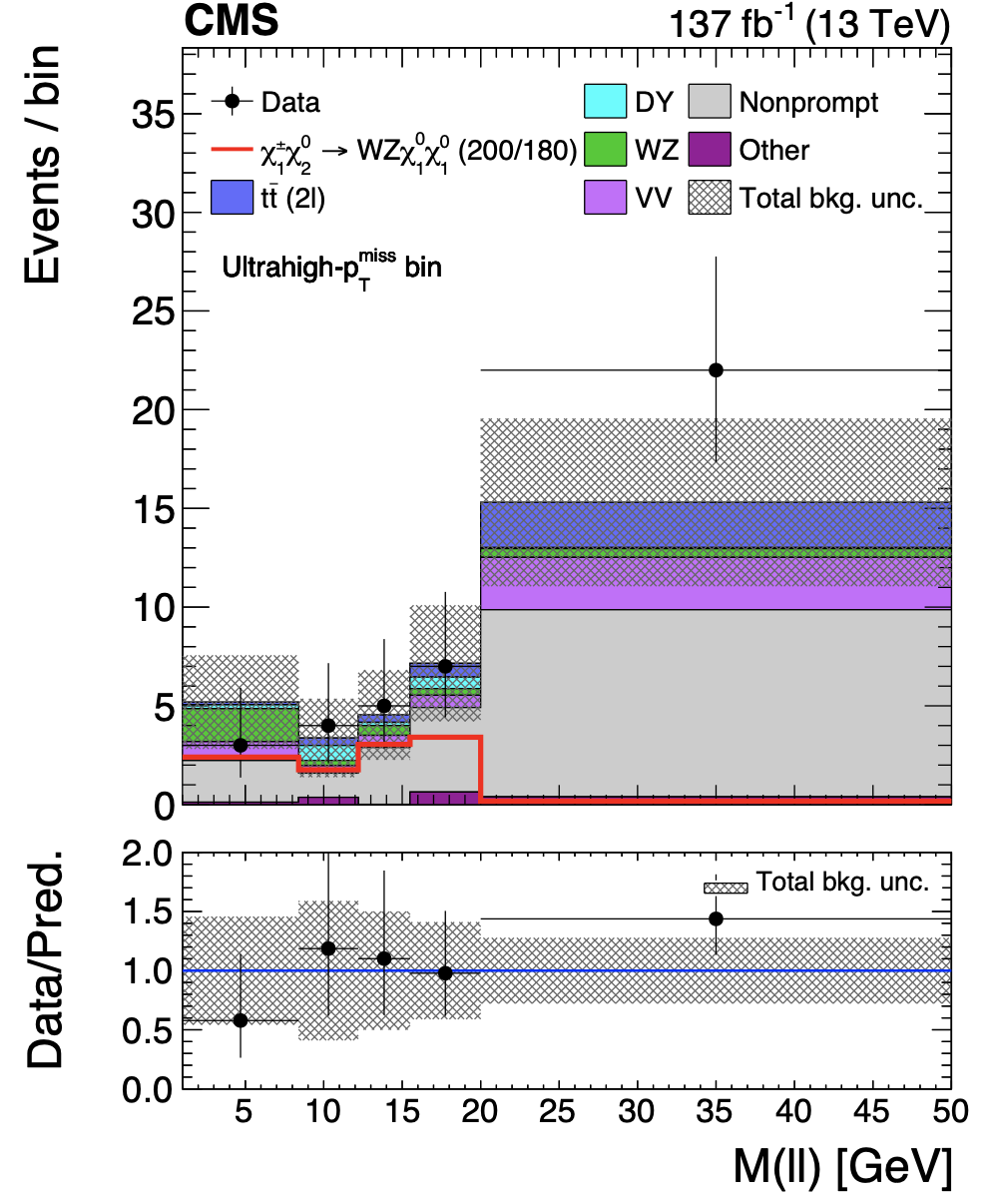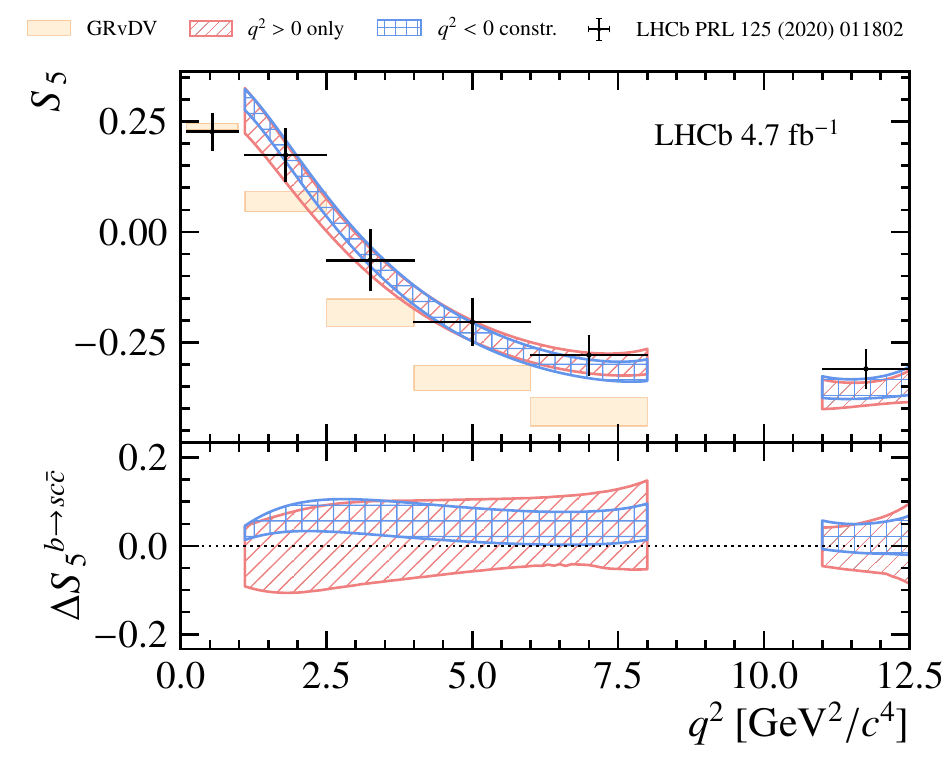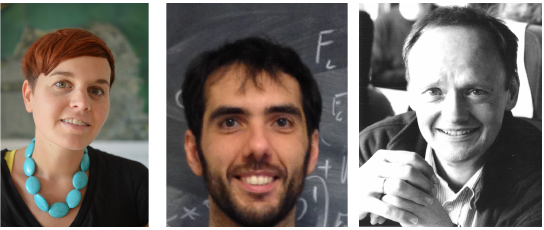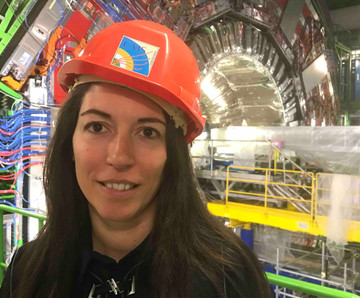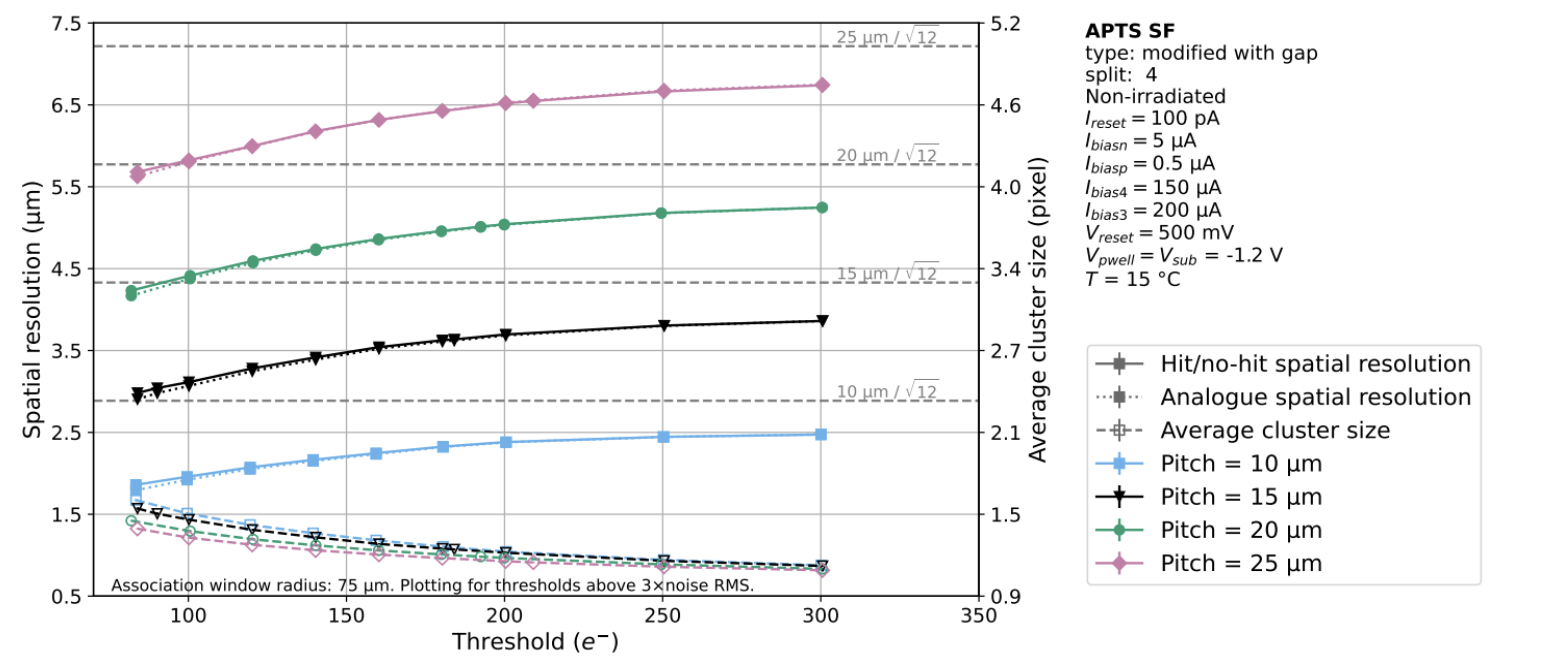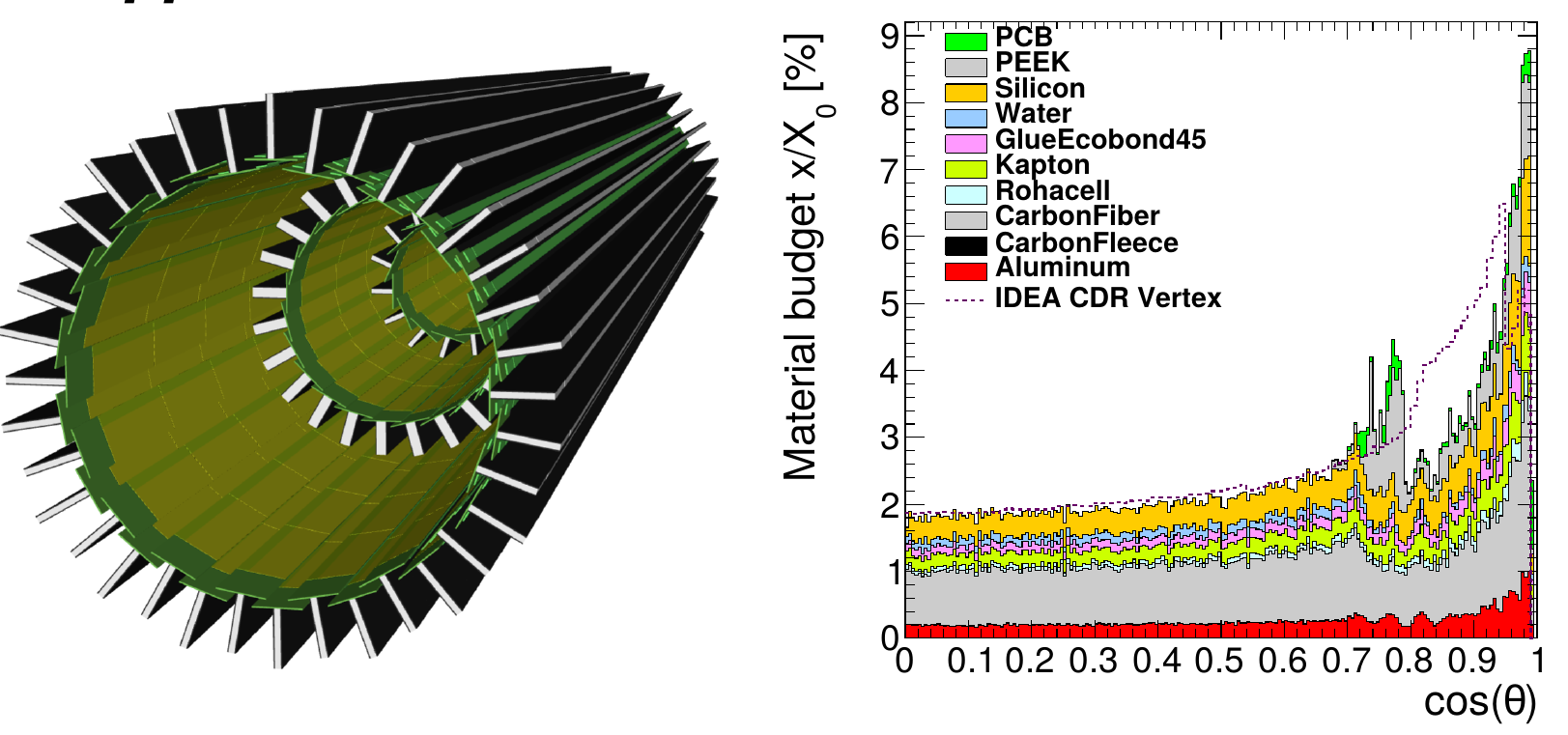Particle Physics

Table of contents
- Prof. Andreas Crivellin - Flavour beyond the Standard Model
- Prof. Thomas Gehrmann - Precision Calculations
- Prof. Massimiliano Grazzini - Standard Model and Higgs Physics at Colliders
- Prof. Gino Isidori - Beyond the Standard Model
- Prof. Stefano Pozzorini - Automated Simulations for high-energy colliders
- Prof. Adrian Signer - High-intensity low-energy particle physics
- Prof. Peter Stoffer - Effective Field Theories at the Precision Frontier
- Prof. Cristina Botta, Prof. Lea Caminada, Prof, Florencia Canelli, Prof. Ben Kilminster – CMS Experiment
- Profs. Lea Caminada, Florencia Canelli, Ben Kilminster - Collider detector development
- Prof. Nicola Serra, Prof. Olaf Steinkamp - LHCb Experiment
- Profs. Lea Caminada, Nicola Serra, Olaf Steinkamp - The Mu3e experiment
- Prof. Nicola Serra - SND Experiment
- Prof. Florencia Canelli - Future Circular Collider (FCC)
Prof. Andreas Crivellin - Flavour beyond the Standard Model
The Standard Model (SM) of particle physics describes Nature’s fundamental constituents and interactions. Matter consists of quarks and leptons (fermions) which interact via the exchange of force particles (gauge bosons). The SM has been tested with high accuracy, both in high-energy searches at the Large Hadron Collider (LHC) at CERN and in low-energy precision experiments. However, it is well known that it cannot be the ultimate theory of nature since it fails to explain observations like Dark Matter, Dark Energy, neutrino masses or the presence of more matter than anti-matter in the Universe. The goal of our research is to construct and study models of physics beyond the SM both regarding their signatures in low-energy precision experiments and direct searches at the Large Hadron Collider (LHC).
Direct and Indirect Hints for Physics Beyond the Standard Model
Significant tensions with the SM predictions were observed in many processes involving multiple leptons and missing energy, (possibly in conjunction with bottom quarks) at the LHC [1]. In particular, the differential top quark distributions (pp → tt → WWbb → eμbb) measured by ATLAS indicate the presence of new Higgs bosons (>5sigma) [2]. These new scalars can also be searched for at the LHC in di-photon final states. Here, we showed that a Higgs triplet can explain the excesses in γγ+X, where X can be missing energy, leptons and (bottom) quarks [3] (see Figure). In Ref. [4] we proposed a complete model which can account for the differential top quark distributions as well as for the di-photon excesses at the same time. This model predicts more new Higgs bosons which can be discovered with LHC run-3 data.
Figure: Statistical combination of the relevant channels for γγ + X. Note that a non-zero branching ratio is preferred at both ≈127 GeV (3.6 σ) and ≈ 151 GeV (3σ).
Highlighted Publications:
- Anomalies in Particle Physics,
A. Crivellin, B Mellado, arXiv 2309.03870 - Uncovering New Higgses in the LHC Analyses of Differential tt̄ Cross Sections,
S. Banik, G. Coloretti, A. Crivellin, B. Mellada, arXiv 2309.03870 - Explaining the γγ + X Excesses at ≈151.5 GeV via the Drell-Yan Production of a Higgs Triplet,
S. Ashanujjaman, S. Banik, G. Coloretti, A. Crivellin, S. P. Maharathy, B. Mellado, arXiv 2402.00101 - Combined Explanation of LHC Multi-Lepton, Di-Photon and Top-Quark Excesses,
G. Coloretti, A. Crivellin, B. Mellado, arXiv 2312.17314
Prof. Thomas Gehrmann - Precision Calculations
Our research group focuses on precision calculations for collider observables within the Standard Model and their application in the interpretation of experimental data. We develop novel techniques and computer algebra tools that enable analytical calculations in perturbative quantum field theory and help to unravel the underlying mathematical structures. We implement our results into numerical parton-level event generator programs, which are flexible tools that allow to take proper account of the details of experimental measurements, enabling precision theory to be directly confronted with the data.
Altarelli-Parisi splitting functions at three and four loops in QCD
The operator product expansion (OPE) provides an elegant method to separate short-distance from long-distance contributions in quantum field theory. Its early application to deeply inelastic lepton-nucleon scattering processes in quan-tum chromodynamics (QCD) successfully predicted the violation of Bjorken scaling, thereby enabling the development of the QCD-improved parton model. The anomalous dimensions of quark and gluon operators in the OPE are directly related to the Altarelli-Parisi splitting functions of the QCD-improved parton model.
Despite its early success and its computational simplic ity, the OPE method has not played a significant role in this progress towards precision QCD for collider observables. Its applicability at higher loop orders is limited by the currently incomplete understanding of the renormalization of singlet quark and gluon operators, which involves the mixing with so-called gauge-variant (GV) operators, that are unphysical operators resulting from the gauge fixing in QCD. Although the existence of such operators has been known since the initial applications of the OPE in QCD, it has not been possible to determine the number and the form of these GV operators — or even only the renormalization counterterms that result from them — beyond what is required for two-loop calculations.
Figure: Two example diagrams contributing to the operator matrix elements for the four-loop pure-singlet splitting functions.
We revisited the long-standing question of the renormalization of the quark and gluon operators, whose anomalous dimensions determine the scale evolution of parton distribution functions. In our work, we developed a new method to extract the Feynman rules for renormalization counterterms that result from GV operators through the computation of multi-leg operator matrix elements in general kinematics. We then applied our newly computed GV counterterm Feynman rules to rederive the three-loop anomalous dimensions of the unpolarized quark and gluon operators in a general covariant gauge using the OPE method. These three-loop anomalous dimensions or the corresponding splitting functions were previously computed with several other approaches (but always in Feynman gauge). Working in a general covariant gauge, we confirmed these earlier results and established for the first time the gauge-independence of the anomalous dimensions at three loops.
Based on these developments, we were able to derive several contributions to the four-loop splitting functions, thereby preparing the ground for their full computation, which is currently ongoing in the context of the ERC Advanced Grant project ‘TOPUP – Theory for collider processes at ultimate precision’.
Highlighted Publications:
- Renormalization of twist-two operators in covariant gauge to three loops in QCD,
T. Gehrmann, A. von Manteuffel and T. Z. Yang,
JHEP 04 (2023), 041. - Complete Nf 2 contributions to four-loop pure-singlet splitting functions,
T. Gehrmann, A. von Manteuffel, V. Sotnikov and T. Z. Yang,
JHEP 01 (2024) 029.
Prof. Massimiliano Grazzini - Standard Model and Higgs Physics at Colliders
Our research activity is focused on the phenomenology of particle physics at high-energy colliders. We perform accurate theoretical calculations for benchmark processes at the Large Hadron Collider and we strive to make their results fully available to the community. We develop flexible numerical tools that can be used to perform these calculations with the specific selection cuts used in the experimental analyses. Our projects span over a wide range of processes from vector-boson pair production to heavy-quark and jet production, to Higgs boson studies within and beyond the Standard Model.
Link
Precise predictions for the associated production of a W boson with a top-antitop quark pair at the LHC
The final state of a W ± boson produced together with a top-antitop pair represents one of the most massive Standard Model (SM) signatures accessible at the Large Hadron Collider (LHC). The leptonic decay of the top quarks and of the W boson lead to multi-lepton signatures relevant to a number of searches for physics beyond the Standard Model (BSM). In particular tt̄W production is one of the few SM processes providing an irreducible source of same-sign dilepton pairs.
Measurements of tt̄W production carried out by the ATLAS and CMS collaborations at the LHC led to rates consistently higher than the SM prediction. With this situation, it is clear that a precise knowledge of the tt̄W SM cross section for this process is of utmost importance. It has been indeed argued that the discrepancy with the data, which is at the 2 − 3σ level, could be explained by the missing next-to-next-to-leading order (NNLO) QCD corrections.
We have completed the first (almost exact) computation of tt̄W production at NNLO in QCD. While the required tree-level and one-loop scattering amplitudes can be evaluated with automated tools, the two-loop amplitude is still unknown. We estimate it by using two different approaches.
Figure: Comparison of our NNLOQCD +NLOEW result to the measurement performed by the CMS (red) and ATLAS (blue) collaborations at 68% (solid) and 95% (dashed) confidence level. We indicate in black and orange the scale and the approximation uncertainties, respectively, of the NNLOQCD +NLOEW result.
The first is based on a soft-W approximation, which allows us to extract the tt̄W amplitude from the known two-loop amplitudes for top-pair production. The second is obtained from the two-loop amplitudes for a W boson and four massless partons through a massification procedure, through which the approximate form of the mass dependent terms is reconstructed. Despite their distinct conceptual foundations and the fact that they are used in a regime where their validity is not granted, the two approximations give consistent results within their respective uncertainties, which is a strong check of our approach. The final NNLO result is obtained by taking the average of the two approximations and linearly combining their uncertainties. The full prediction is obtained by combining the NNLO QCD result with the complete NLO EW corrections.
In the figure we present our NNLOQCD +NLOEW results with their perturbative uncertainties in the σ tt̄W + − σ tt̄W − plane, together with the 68% and 95% confidence level regions obtained by the ATLAS and CMS collaborations. The subdominant uncertainties due to the approximation of the two-loop corrections are also shown. When comparing to the data, we observe an overlap between the NNLOQCD+NLOEW uncertainty bands and the 1σ and 2σ contours of the ATLAS and CMS measurements, respectively.
Highlighted Publications:
- Precise predictions for the associated production of a W boson with a top-antitop quark pair at the LHC,
L. Buonocore et al., arXiv:2306.16311,
Phys.Rev.Lett. 131 (2023) 23, 231901.
Prof. Gino Isidori - Beyond the Standard Model
The Standard Model of fundamental interactions describes the nature of the basic constituents of matter, the so-called quarks and leptons, and the forces through which they interact. This theory is very successful in laboratory experiments over a wide range of energies. How ever, it fails in explaining cosmological phenomena such as dark matter and dark energy. It also leaves unanswered basic questions, such as why we observe three almost identical replicas of quarks and leptons, which differ only in their mass. Finally, it gives rise to conceptual problems when extrapolated to very high energies, where quantum effects in gravitational interactions become relevant. The goal of our research activity is to formulate extensions of this theory that can solve its open problems, identifying way to test the new hypotheses about fundamental interactions in future experiments.
Probing new interactions via flavour-changing transitions
One of the key predictions of the Standard Model (SM) is that quarks and leptons do appear in three replicas (denoted generations, or flavours) that behave exactly in the same manner under the known microscopic forces, and differ only in their mass (or better their interaction with the Higgs field). Why we have three almost identical replica of quarks and leptons, and which is the origin of their different interactions with the Higgs field is one of the big open questions in particle physics. The peculiar structure of quark and lepton masses, which exhibits a strongly hierarchical pattern, is very suggestive of some underlying new dynamics that we have not identified yet. The main goal of our research activity in the last few years is trying to understand the nature of this dynamics. To achieve this main goal, we proceed along three complementary research directions:
1) we build explicit extensions of the SM that can explain the observed pattern of quark and lepton masses, possibly addressing also other short comings of the SM (in particular the instability of the Higgs sector);
2) we investigate the consistency of the new hypothesized interactions with current data, particularly on rare flavour-changing transitions;
3) we perform detailed predictions, according to the new hypotheses, in view of future experiments.
Figure: Structure of the b → sl + l − transition, as extracted from different physical processes [1]. The blue band is derived from the inclusive decay B → Xs μ + μ− at large dilepton invariant mass. The dark and light red regions indicate the combined compatibility at 68% and 90% confidence level, respectively.
Over the past year, we have worked mainly along the first and second directions. On the model-building site, we have systematically analysed the hypothesis of flavour deconstruction, i.e. the idea that the apparent flavour universality of strong, weak and electromagnetic interactions is only an accidental low-energy property, resulting from an ultraviolet theory where gauge symmetries act differently on the different fermion families. Beside investigating the technical aspects of this hypothesis, we have shown that it explains well the observed pattern of quark and lepton masses and, at the same time, offers a general framework to construct models able to stabilise the Higgs sector.
Highlighted Publications:
- Semi-inclusive b → sl+l- − transitions at high q 2 ,
G. Isidori, Z. Polonsky and A. Tinari,
Phys. Rev. D108 (2023) 093008, arXiv:2305.03076. - Non-universal gauge interactions addressing the inescapable link between Higgs and flavour,
J. Davighi and G. Isidori,
JHEP 07 (2023) 147, arXiv:2303.01520. - Third-family quark-lepton Unification and electroweak precision tests,
L. Allwicher et al.,
JHEP 05 (2023) 179, arXiv:2302.11584.
Prof. Stefano Pozzorini - Automated Simulations for high-energy colliders
Our research deals with the development of automated methods for the simulation of scattering processes in quantum-field theory. The O PEN L OOPS algorithm, developed in our group, is one of the most widely used programs for the calculation of scattering amplitudes at the LHC. This tool is applicable to arbitrary collider processes up to high particle multiplicity and can account for the full spectrum of first-order quantum effects induced by strong and electroweak interactions.
Currently, new automated methods for second-order quantum effects are under development. Our phenomenological interests include topics like the strong and electroweak interactions of heavy particles at the TeV scale, or theoretical challenges related to the extraction of rare Higgs-boson and dark-matter signals in background-dominated environments.
Precision simulation of top-quark pair production and decay
Since the first release of the OPEN LOOPS program, our group was involved in the integration of our code into widely used Monte Carlo (MC) generators that support fully fledged simulations of proton–proton collisions at the LHC. In this context, one of the main objectives has been the precise theoretical description of multi-particle processes that involve the production of heavy unstable particles and their decays.
-
Together with the authors of the POWHEG generator, we have pioneered the development of fully realistic precision simulations for the production and decay of top-quark (tt̄) pairs. Top quarks are the heaviest known elementary particles. Due to their very short lifetime of 5 × 10−25 seconds, top quarks can be experimentally studied only through the detection of their decay products. Such decays involve the conversion of top quarks into bottom quarks (b) and W bosons, which subsequently decay into lepton–neutrino (lν) or light quark–anti-quark pairs (qq̄' ) (see Figure).
Figure: Examples of Feynman diagrams representing two top-production modes that yield identical final states involving a bottom–anti-bottom pair (bb̄) a light quark–anti-quark pair (qq̄'), a charged lepton l+ and a neutrino νl . The tt̄ mode (top) involves tt̄ production with t → bl+ νl and t̄ → b̄qq̄' decays. The tWb mode (bottom) involves only a single anti-top quark with t̄ → b̄qq̄' decay, while the bl+ νl system does not give rise to any top-quark resonance.
So far, the analysis of LHC data was largely based on MC simulations where the production of tt̄ pairs and their decays are handled as separate processes. This approach relies on the assumption that tt̄ pairs are produced on a time scale that is negligibly small as compared to the lifetime of top quarks. This is a reasonably good approximation. However, the in- creasing precision of LHC data calls for more accurate simulations, where the effects of the short life-time of top quarks are taken into account. To this end, we have developed a new kind of MC simulations where unstable top and anti-top quarks are handled as resonances with well-defined shapes and widths, as predicted by quantum-field theory. Technically, this was achieved by matching OPENLOOPS scattering amplitudes to parton showers in the “resonance-aware” POWHEG framework [1].
These new simulations account for various physics features that are usually neglected or handled in a simplified way. In particular, they guarantee a fully realistic description of top resonances, including quantum effects. Moreover, they provide a unified description of resonant tt̄ production with non-resonant tWb production (see Figure), including the quantum interference between these two top production mechanisms. These and other features of the new MC generator presented in [1] play an important role for precision measurements of the top-quark mass as well as for the accurate modelling of backgrounds to new-physics searches at the LHC.
Highlighted Publications:
- Resonance-aware NLOPS matching for off-shell tt + tW production with semileptonic decays,
T. Ježo, J. Lindert, St. Pozzorini,
JHEP 10 (2023) 008
Prof. Adrian Signer - High-intensity low-energy particle physics
Particle physics at low energy but high intensity provides an alternative road towards a better understanding of the fundamental constituents of matter and their interactions. Using the world’s most intense muon beam at PSI allows to look for tiny differences to the Standard Model or for extremely rare decays. Our group provides theory support for such experiments by computing higher-order corrections in Quantum Electrodynamics (QED) to scattering and decay processes and by systematically analysing the impact of experimental bounds on scenarios of physics beyond the Standard Model. These calculations are also adapted to experiments performed at other facilities with lepton beams.
NNLO QED effects in lepton-proton scattering
Our group has set up McMule (Monte Carlo for Muons and other LEptons), a generic framework for higher-order QED calculations of scattering and decay processes involving leptons. This framework properly treats infrared singularities when combining loop amplitudes and allows to obtain fully differential cross sections at any order in QED perturbation theory with massive fermions. The long-term goal is to provide a library of relevant processes with sufficient precision, typically at next-to-next-to leading order (NNLO) in the perturbative expansion.
The code is public and the current version is available athttps://gitlab.com/mule-tools/mcmule.
Low-energy lepton-proton scattering has received renewed attention due to discrepancies in experimental data and the ongoing unclear situation regarding the proton-radius determination. Currently, the MUSE collaboration is taking data at PSI for electron-proton and muon-proton scattering with incoming lepton momenta between 100-200 MeV. With McMule we are providing a state-of-the-art theoretical description of these processes.
Figure: Various contributions to the differential cross section w.r.t. the scattering angle for electron-proton scattering with incoming electrons of 210 MeV momentum (see text for details).
In the case of lepton-proton scattering an additional complication arises due to the fact that the proton is not point like. For small momentum transfer, using dipole factors for the photon-proton interaction is a reasonable approximation. However, the form factors and potential additional hadronic effects do affect the predictions. In particular, the so called two-photon-exchange (TPE) contributions have received a lot of attention in the literature. Their impact on proton-radius extraction from scattering experiments has been widely discussed. What we have shown is that standard leptonic NNLO QED corrections, which we have computed, are as important as details of the TPE contributions.
This statement is illustrated in the figure, where various contributions to electron-proton scattering are plotted. Results for a pointlike proton are shown in grey (tree level), yellow (leptonic NLO), and green (TPE). The relative impact of going from a pointlike proton to including the form factor is shown in red (tree level) and pink (TPE). The various blue curves (dotted, solid, dashed) indicate NNLO leptonic corrections and three-point photon exchange (for a pointlike proton). As shown in the figure, they are of the same importance as detailed modifications of the TPE. Hence, NNLO QED effects need to be carefully considered when extracting the proton form factor or the proton radius from lepton-proton scattering experiments.
Highlighted Publications:
- 1. Impact of NNLO QED corrections on lepton-proton scattering at MUSE,
T. Engel, F. Hagelstein, M. Rocco, V. Sharkovska, A. Signer and Y. Ulrich,
Eur. Phys. J. A 59 (2023) no.11, 253 doi:10.1140/epja/s10050-023-01153-x
Prof. Peter Stoffer - Effective Field Theories at the Precision Frontier
The research of our group is focused on indirect searches for physics beyond the Standard Model and the theoretical challenges at the precision frontier: these concern the model-independent description of non-perturbative effects due to the strong interaction at low energies as well as higher-order perturbative effects that can be described within effective field theories.
Our current research activity is mainly motivated by experimental progress at the low-energy precision frontier, such as searches for CP- or lepton-flavor-violating observables and the improved measurement of the muon anomalous magnetic moment.
Despite its success, the Standard Model (SM) of particle physics fails to explain certain observations, such as the baryon asymmetry in the universe, dark matter, or neutrino masses. Our group is interested in indirect searches for physics beyond the SM, conducted in low-energy experiments at very high precision. These observables pose interesting theoretical challenges concerning the model-independent description of effects beyond the SM, as well as non-perturbative effects due to the strong nuclear force.
CP and lepton-flavor violation
Beyond-the-SM sources of CP or lepton-flavor violation are probed up to very high scales by searches for electric dipole moments (EDMs) or lepton-flavor-violating decay processes, e.g., in the upcoming n2EDM and Mu3e experiments at PSI. We are interested in non-perturbative effects that affect these observables at low energies. Their description is based on effective field theories (EFTs) and usually requires input from lattice QCD.
Our group is working on the matching between the MS scheme used in EFTs and a gradient-flow scheme that can be implemented with lattice QCD. We recently obtained results for all dimension-six operators contributing to the neutron EDM. In order to reduce theoretical uncertainties, we are extending this work beyond one loop.
The results will enable the use of future lattice-QCD input for an accurate determination of contributions beyond the SM to the neutron EDM.
Figure: The contribution of different intermediate states to the two discontinuities in the new dispersive formalism for hadronic light-by-light scattering (from Ref. [1]).
Anomalous magnetic moment of the muon
The theoretical prediction of the anomalous magnetic moment of the muon is currently affected by several puzzles that concern the determination of hadronic effects: there is a conflict between data-driven and recent lattice-QCD evaluations of hadronic vacuum polarization, but also between different e + e− experiments used as input in the data-driven determination. These different discrepancies need to be resolved in order to enable a meaningful comparison to the experimental measurement of the anomalous magnetic moment of the muon at Fermilab.
In order to reduce these non-perturbative uncertainties, we are extending the dispersive frameworks used for hadronic vacuum polarization and for hadronic light-by-light scattering.
Highlighted Publications:
- Dispersion relations for hadronic light-by-light scattering in triangle kinematics,
J. Lüdtke, M. Procura, P. Stoffer,
JHEP 04, 125 (2023), arXiv:2302.12264 - One-loop matching of CP-odd four-quark operators to the gradient-flow scheme,
J. Bühler, P. Stoffer,
JHEP 08, 194 (2023), arXiv:2304.00985 - One-loop matching of the CP-odd three-gluon operator to the gradient flow,
Ò. L. Crosas, C. J. Monahan, M. D. Rizik, A. Shindler, P. Stoffer,
PLB 847, 138301 (2023), arXiv:2308.16221
Prof. Cristina Botta, Prof. Lea Caminada, Prof, Florencia Canelli, Prof. Ben Kilminster – CMS Experiment
The CMS (Compact Muon Solenoid) experiment at CERN measures properties of the fundamental particles and their interactions, and can uncover new forces and particles. CMS surrounds one of the interaction points at the Large Hadron Collider (LHC), which when colliding protons produces an energy density comparable to that of the universe one ten- billionth of a second after it started.
The CMS detector is used to determine the energy and direction of the energy and directions of the particles emerging from the LHC collisions of protons and heavy ions. In 2012, with 10 fb−1 , CMS discovered the Higgs boson, proving the mechanism on how particles acquire mass. CMS is also focused on detector refurbishment for the data-taking period of 2022 to 2025, and upgrades needed for the high-luminosity run of the LHC from 2029 to 2038.
The CMS group at UZH is strong in data analysis, focusing on the fundamental mysteries remaining in particle physics. We are studying the Higgs boson, and also using it as a probe to look for new forces and particles. We are searching for dark matter in unexplored phase space, and we are measuring standard model processes that can elucidate rare phenomena.
In collisions at the LHC, the protons that collide are not fundamental particles, but are composed of quarks and gluons called partons. While most interactions involve the collision of one parton from each proton, double-parton interactions, in which two partons from each proton were first observed around 1990. In our 2023 paper [1], we have now observed for the first time, interactions in which 3 partons from each proton interact. The striking signature of this is the production of three J/ψ particles, each of which decays to two muons (Fig. 1). Such physics processes are hard to calculate theoretically, and provide insight into proton structure.
Figure 1: The triple parton scattering (TPS) of two protons at the LHC. The CMS experiment has recently observed this process for the first time, by measuring the muon pairs produced from the three J/ψ decays.
In 2023, the UZH CMS group published the first observation of the production of tau leptons for in PbPb collisions at the LHC. The tau leptons are produced by photons surrounding the high electromagnetic field of the Pb ions. Since these events are produced through the electromagnetic interaction, the events are extremely clean, allowing the group to measure the lowest energy tau leptons ever reconstructed by the CMS experiment. Using these events, a measurement of the anomalous magnetic moment of the tau lepton (g-2)τ could be determined. So far, this result agrees with the SM, however, large deviations have been observed in the measurement of (g-2)μ, and it could be that such deviations could be even larger for the τ lepton. This result was published by PRL with the editor’s choice distinction [2].
Leveraging the recently observed ttH (multilepton) events, the UZH CMS group embarked on a study investigating the Lorentz structure of the top quark Yukawa interaction. Our focus was mainly on probing the potential existence of CP-violating terms within this coupling. Expanding upon previous analysis frameworks, the study introduced a novel event categorization based on kinematic properties. Events were categorized depending on their resemblance to the ttH signal under CP-odd or CP-even hypotheses or background. These results constrain |fCP Htt | to less than 0.55 at 68% confidence level, in agreement with the standard model CP-even prediction of |f CPHtt | = 0 [3].
The UZH CMS group remains prominent in the study of the top quark and its interactions with a recent measurement of top quark pairs produced in association with b-quarks (ttbb) process. Enhancing the accuracy and precision of perturbative calculations in QCD for this process is vital, as they pose a notable limitation for measurements of the Higgs boson through the ttH(bb) process, as well other searches for new physics at the LHC. Measurements of the ttbb cross-section exceed the predicted rate by 30%, underscoring the necessity for further experimental investigations to refine theoretical calculations. The UZH group spearheaded a new measurement of the differential ttbb cross-section, scrutinizing variables that could enhance the understanding of the diverse processes contributing to ttbb production (Fig. 2). The results of these studies represent the most comprehensive examinations of ttbb to date and are poised to reduce uncertainties in its modeling significantly. The differential cross-sections exhibit varying levels of agreement with theoretical predictions, with none of the tested generators simultaneously capturing the features of all measured distributions [4].
Figure 2: Predicted and observed normalized differential cross sec-tions in the ≥5 jets: ≥3b fiducial phase space for the HT of b jets.
In 2023, the UZH group remained involved in searches for BSM Physics caracterized by new states with masscompressed spectra, foreseen by several Dark Matter models. These searches target final states with soft leptons and moderate missing transverse energy. In particular, the group de-
veloped and published the statistical combination of six CMS searches targeting electroweak-produced supersymmetry [5], as shown in Figs. 3 and 4.
Fig. 3: Neutral and charged supersymmetric particles decaying to Standard Model bosons and a stable supersymmetric particle, which would be a candidate for dark matter.
Fig. 4: This plot of the invariant mass of the charged leptons in CMS events compares data with a background model. The red line indicates what the presence of the supersymmetric signal shown in Figure 3 would add to the distribution.
Highlighted Publications:
- Observation of triple J/ψ meson production in proton-proton collisions at √s = 13 TeV,
CMS collaboration, Nat. Phys. 19 (2023) 338. - Observation of ττ lepton pair production in ultraperipheral lead-lead collisions at √(s N N) = 5.02 TeV,
CMS collaboration, Phys. Rev. Lett. 131 (2023) 151803. - Search for CP violation in ttH and tH production in multilepton channels in proton-proton collisions at √ s = 13 TeV,
CMS collaboration, JHEP 07 (2023) 092. - Inclusive and differential cross section measurements of ttbb production in the lepton+jets channel at √ s = 13 TeV,
CMS collaboration, Submitted to the Journal of High Energy Physics, arXiv 2309.14442 - Combined search for electroweak production of winos, binos, higgsinos, and sleptons in proton-proton collisions at √s = 13 TeV,
CMS collaboration, Submitted to PRD, 2023, arXiv 2402.01888
More publications at: https://www.physik.uzh.ch/r/cms
Profs. Lea Caminada, Florencia Canelli, Ben Kilminster - Collider detector development
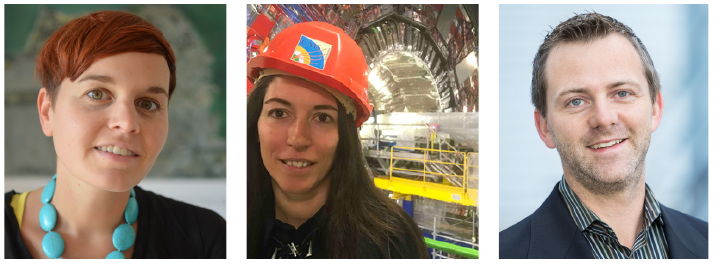
The CMS detector includes a silicon pixel detector as the innermost part of the tracking system. The pixel detector provides 3-dimensional space points in the region closest to the interaction point that allow for high-precision tracking of charged particles and vertex reconstruction. This enables the measurement and search for particles that decay to b quarks and tau leptons, such as the Higgs boson, the top quark, and leptoquarks. Our groups are major contributors to the CMS pixel detector project. We helped build and operate the current pixel detector and are involved in the design and prototyping of a new, improved version with more tracking layers, less material, and higher data rates to be installed in 2028 for high-luminosity LHC (HL-LHC). Furthermore, we are developing and testing new pixel detector concepts for future upgrades of CMS, future accelerators and other applications.
In 2022, the UZH group replaced the innermost layer of the pixel detector in order to maintain efficient tracking during Run 3. The new layer has been successfully operated with the rest of the detector since 2022 and our groups contribute significantly to its operation and monitoring [1].
CMS will collect more than 20 times the current data set during the period of 2029 to 2041 (during HL-LHC). The UZH group together with PSI, will build an inner tracking detector for this period, that will extend the tracking coverage. This Tracker Extended Pixel detector (TEPX) will consist of a large-area disk system with more than one billion pixels [2]. At UZH, we have contributed to the module concept and we are developing the disk electronics, components of the pixel detector readout chain as well as lightweight mechanical structures and thin-walled cooling tubes to build the disk structures with minimal material. We tested prototype modules integrated with the disk electronics and characterized the performance of the novel serial powering scheme. In particular we studied the thermal behavior of the disk and compared it to simulations. After the successful validation we are now moving towards production of the pixel modules and detector system.
-
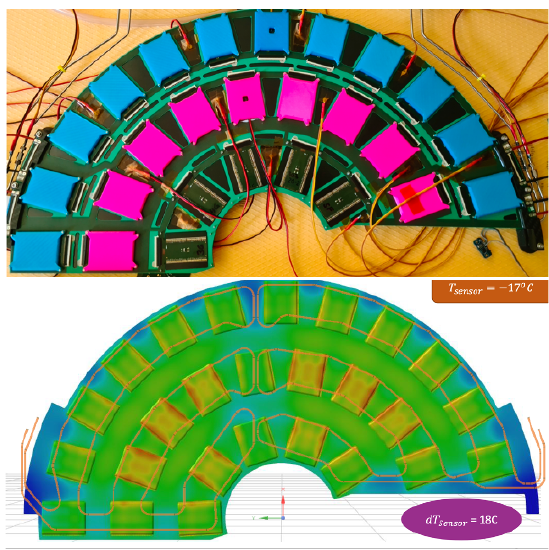
- Zoom (PNG, 439 KB)
-
Figure: Measuring of the thermal behavior of the TEPX disc is key to a successful operation. Top: test setup with thermal loads; Bottom: simulated temperatures.
We are studying new types of particle detectors called LGAD, that measure at the same time position and time of arrival of charged particles with high accuracy. We measured a timing resolution of less than 40 picoseconds (40·10 −12 s) in our lab with different flavours of LGAD structures. In order to use these sensors in the experiment, R&D for pixelated read-out electronics with fast timing is needed. We are evaluating the performance of different TDC (Time-to-Digital Converter) designs that have been produced in 110 nm CMOS technology and will test their performance when processing the signals from the LGAD sensor. The long-term focus is towards a possible use of disks with timing capabilities in later upgrades of the TEPX detector. Such a technology could greatly improve the physics potential of CMS during HL-LHC.
In 2023, the UZH group remained involved in the upgrade of the CMS L1 hardware Trigger for HL-LHC. We developed a new method to identify electrons in the harsh en vironment of 200 pile-up interactions based on a multivariate approach and makes use of novel tools to synthesize machine learning algorithms into FPGA’s firmware [3].
Highlighted Publications
- Development of the CMS detector for the CERN LHC Run 3,
CMS Collab., arXiv:2309.05466The Phase-2 - Upgrade of the CMS Tracker,
CMS Collaboration, CMS-TDR-014 - Electron Reconstruction and Identification in the CMS Phase-2 Level-1 Trigger,
CMS collaboration, https://cds.cern.ch/record/2868782
Prof. Nicola Serra, Prof. Olaf Steinkamp - LHCb Experiment
LHCb is an experiment for precision measurements of observables in the decays of B mesons at the Large Hadron Collider (LHC) at CERN. We play a leading role in measurements with B meson decays and in measurements of electroweak gauge boson production, and have made important contributions to the LHCb detector. We contribute to an ongoing major upgrade of the detector for 2023 and are involved in studies for future upgrades of the experiment.
A fresh look at a rare B decay
Rare b → sμ+ μ − decays can only proceed through loop or box transitions and are therefore highly sensitive probes of new physics beyond the Standard Model (SM). Such new physics models include particles with masses up to 50 TeV, which is well beyond the maximum energy scale directly accessible at the LHC.
Over the last decade, several discrepancies have arisen in the behaviour of b → sμ+ μ − when comparing to predictions based on the SM, many of which the our group has directly contributed to. The statistical significance of these discrepancies is large, but depends strongly on the uncertainties associated with the SM predictions, which rely on calculations of low-energy QCD (strong force). These calculations are notoriously difficult, and are therefore the main stumbling block in the way to interpreting deviations from the SM in this system.
A new analysis of the decay of the B0 meson (bound state of a beauty quark and a down quark) to a K ∗0 meson (bound state of a strange quark and a down quark) and two muons has treated these QCD uncertainties in a new way by including them directly into the fit to data. By treating them directly in the measurement, the distribution of the data can help constrain the QCD parameters during the fit procedure which allows to potentially disentangle the contribution of new physics with QCD.
Figure: Projection of the forward-backward asymmetry (A FB ) as determined by the fresh analysis both with (blue) and without (red) theoretical constraints. Also shown in black are previous measurements which do not directly fit for QCD parameters and the SM predictions in yellow.
The data analysed was collected by the LHCb experiment, which is a detector specifically designed to study beauty decays. A full angular analysis of the decay was required to compare the helicity structure of the B 0 → K ∗0 μ+ μ− decay with the SM prediction. An example observable is the forward-backward asymmetry of the positive muon with respect to the B0 direction in the di-lepton rest frame (A FB ).
The main improvement for this analysis was to fit the distribution of the squared invariant mass of the di-lepton system (q2 ) in addition to the angles describing the decay. A comparison of the results with the previous measurements is shown in the figure, and are displayed with and without including QCD predictions in the unphysical region (q2 < 0). The SM predictions in yellow are also shown.
The new analysis agrees well with the older measurements, suggesting that no problems with the predictions have been found. However, the significance of the discrepancy with the SM predictions in the new analysis is reduced below two standard deviations, meaning that the interpretation is still unclear at this stage. New analyses with different decay modes and more data will be needed to clarify the situation in the future, for which the upgraded LHCb detector that has just been install will be key.
Highlighted Publications:
- All LHCb publications: lhcb.web.cern.ch/lhcb/
- Determination of short- and long-distance contributions in B0 → K ∗0 μ + μ− decays,
LHCb Collab., arXiv:2312.09102
Profs. Lea Caminada, Nicola Serra, Olaf Steinkamp - The Mu3e experiment
The mu3e experiment at PSI aims at probing the Standard Model of particle physics by searching for the decay of positively charged muons to two positrons and an electron. The observation of this decay would falsify one of the central assumptions of the Standard Model and provide unequivocal proof of "new" physics. The measurement is challenging and requires the development of novel detector techniques, which are also of significant interest for experiments at future collider facilities.
In a first phase of the experiment, the mue3 collaboration aims at exploiting existing muon beams at PSI to improve on the currently best upper limit by three orders of magnitude. The sensitivity of the experiment relies on efficient suppression of backgrounds, which necessitates precise measurements of the origins, momenta and production times of the low-energy positrons and electrons produced in decays of muons at rest. To match these requirements on measurement precision, the design of the detector incorporates a number of novel technologies. In particular, the reconstruction of the production vertices and trajectories of positrons and electrons relies on HV-MAPS, Monolithic Active Pixel Sensors produced in a commercial High-Voltage tolerant CMOS process. After an extensive R&D phase, the final version of HV-MAPS for mu3e has been produced and first detector modules have been assembled. Our group has joined this effort and already plays an important role in the assembly and testing of components for the vertex detector as well as in the development of the necessary quality assurance tools.
Figure: Left: mu3e test stand in our lab; right: detail showing one of the first "ladders" of the mu3e vertex detector.
.
Prof. Nicola Serra - SND Experiment
The SND@LHC is a recently approved and running experiment at the Large Hadron Collider (LHC) performing neutrino physics and searches for feebly interacting particles. It collects man-made neutrinos in the uncharted TeV energy scale from pp collision at the ATLAS interaction point.
The experiment is located 480 m downstream of ATLAS. The location permits the experiment of detecting the high flux of neutrinos in a very forward region (η > 7) in an unexplored energy region between 350 GeV and 10 TeV. The observation was performed using a data set of proton-proton (pp) collisions at a center-of-mass energy of 13.6 TeV collected in 2022 with an integrated luminosity of 36.8 fb−1 a total of 8 νμ interaction candidates were observed with an estimated background of 0.086 events, yielding a significance of about 7 standard deviation for the observed ν μ signal.
This year, the lower part of the VETO system acceptance will be greatly improved by digging a few centimeters into the ground and adding an extra layer of the VETO system built at UZH. This element will not only help to increase the vetoed area, but will also help in the analysis of electron neutrinos. The experiment is expected to collect an integrated luminosity of about 90 fb−1 in 2024. With this amount of data, new results are expected. Exciting times are ahead!
Figure: Muon flux: Distribution of muon tracks seen by the main tracking detector (left) and in the muon detector at the downstream side (right) at the most upstream detector plane. The distribution is normalized to the unit integral. The red border delimits the region considered for the muon flux measurement.
Prof. Florencia Canelli - Future Circular Collider (FCC)
The goal of the Future Circular Collider (FCC) is to greatly push the intensity and energy frontiers of particle colliders to answer fundamental questions about the universe by studying the properties of particles and forces at energies beyond what current colliders can achieve. The FCC will lay the foundations for a new research infrastructure succeeding the LHC and serving the world-wide physics community for the rest of the 21st century. The first stage, FCC-ee, will collide e+ e− pairs in unprecedented numbers at energies between 90 and 365 GeV.
The UZH group specializes in developing advanced tracking detectors and algorithms tailored for the FCC project. Our primary objective is to provide critical insights to support the FCC Feasibility Study, slated for completion by 2025.
Accurate identification of hadronic final states is crucial for harnessing the physics potential of collider experiments. At the FCC-ee, the pristine experimental environment, devoid of effects such as QCD ISR and PDFs, simplifies flavor tagging significantly compared to the (HL-)LHC, promising substantial improvements. Specifically, discriminating strange quark jets opens avenues for groundbreaking studies, including Z → ss production, rare Higgs boson decays, investigation of strange Yukawa coupling, determination of CKM matrix elements through W decays. We have implemented a multiclassifier neural network built upon a transformer-based architecture and achieved state-of-the-art performance in strange quark discrimination at FCC-ee [1].
These results will be used to evaluate the feasibility of novel physics measurements and impose requirements on the detector design. Optimal flavor tagging requires that the innermost vertex detector at FCC-ee minimize the material to ensure optimal position and momentum resolution.
The UZH strategy to reduce material involves the utilization of ultra-thin Monolithic Active Pixel Sensors (MAPS) fabricated using a cutting-edge 65nm process. Since autumn 2022, we’ve collaborated with the ALICE ITS3 consortium, IPHC Strasbourg, and other partners to investigate two test structures for these pixel sensors: APTS and CE-65 [2]. Our current focus, led by two dedicated Ph.D. students, revolves around characterizing these sensors using a Fe-55 source and test beams at CERN PS and SPS and at DESY. Spatial resolutions down to 2.5 μm are achievable as shown in Fig. 1, with hit efficiencies > 99% [3].
Figure 1. Spatial resolution of the APTS test structure with pixel pitches between 10 and 25 μm in the 65 nm TPSCo CMOS process [2].
Our group also implemented one of the proposed vertex detector designs in full simulation using the key4hep framework common to all future colliders [3]. Employing realistic models of all detector components alongside innovative reconstruction algorithms is imperative for accurately assessing the physics potential of experiments at the FCC). Figure 2 shows the geometry of the first three layers and the resulting material budget of the vertex detector, which was included in the mid-term report of the Feasibility Study. The material is in line with the previous estimate, showing that the assumptions taken for the vertex detector in the CDR stage were realistic. In 2024, we will continue the CE-65 characterization and investigate ultra-light vertex detector designs.
- Figure2: Full simulation geometry of the IDEA vertex inner barrel (left) and the resulting material budget for the whole vertex detector (right).
Highlighted Publications:
- Jet-Flavour Tagging at FCC-ee, K. Gautam, ICHEP2022, arXiv:2210.10322
- Characterisation of analogue MAPS test structures implemented in a 65 nm CMOS imaging process,
G. Aglieri Rinella et al., arXiv:2403.08952 - Design and Performance of the IDEA Vertex Detector at FCC-ee in Full Simulation,
A. Ilg, PoS(EPS-HEP2023), doi:10.22323/1.449.0600
Table of contents
- Prof. Andreas Crivellin - Flavour beyond the Standard Model
- Prof. Thomas Gehrmann - Precision Calculations
- Prof. Massimiliano Grazzini - Standard Model and Higgs Physics at Colliders
- Prof. Gino Isidori - Beyond the Standard Model
- Prof. Stefano Pozzorini - Automated Simulations for high-energy colliders
- Prof. Adrian Signer - High-intensity low-energy particle physics
- Prof. Peter Stoffer - Effective Field Theories at the Precision Frontier
- Prof. Cristina Botta, Prof. Lea Caminada, Prof, Florencia Canelli, Prof. Ben Kilminster – CMS Experiment
- Profs. Lea Caminada, Florencia Canelli, Ben Kilminster - Collider detector development
- Prof. Nicola Serra, Prof. Olaf Steinkamp - LHCb Experiment
- Profs. Lea Caminada, Nicola Serra, Olaf Steinkamp - The Mu3e experiment
- Prof. Nicola Serra - SND Experiment
- Prof. Florencia Canelli - Future Circular Collider (FCC)

